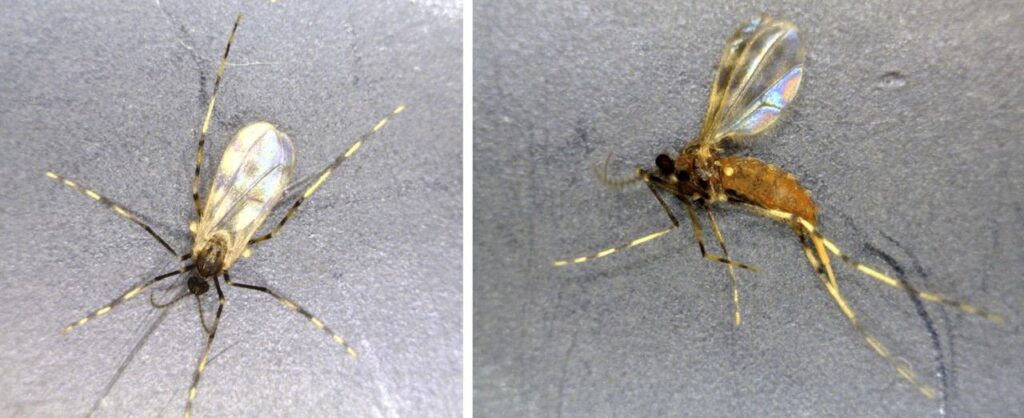Soybean producers in the Midwest are watching their fields with a wary eye these days, thanks to a relatively fresh antagonist: the soybean gall midge (Resseliella maxima). This insect has made its presence known in Nebraska since its first discovery back in 2011, but its sphere of influence now spills into Iowa, South Dakota, Minnesota, and Missouri. Infestation patterns can be unpredictable. Some seasons it’s barely nipping at field edges; other years smaller parcels see midges from fencepost to fencepost. So evaluating fields for this pest requires an alertness almost reminiscent of finding just the right tomato at a farmer’s market—poke here, prod there—never quite sure where rot begins and health ends.
Identification trips up more than one seasoned agronomist. Adults clock in at around 1/4 inch long; their bodies are slender and legs long with alternating light-dark banding that resembles nothing less than barbershop poles captured beneath winged glass. The orange abdomen gives off a flicker of color—but adults skulk around during dusk or dawn near plant bases so farmers rarely see anything but perhaps an unusual movement peripherally.
Checking larvae calls for rolling sleeves up past elbows and working close to the soil surface (a botanist’s lament about laundry bills might belong here). Larvae look like tiny carrot shavings—no legs—their hue depends on instar: clear morsels early on; milky white or light orange later; finally blazing orange-red as they fatten before pupation. Sometimes all stages crowd together under one bit of soybean epidermis—a baffling scene hinting female midges stagger egg-laying across time rather than all at once.
Field evaluation is not easing itself into tradition smoothly. For starters, most initial infestations begin along field edges—the usual suspects are weaker areas adjoining last year’s infested bean residues or grassy fencerows left unsprayed. Gashes appear first at these margins before wandering deeper if undeterred. Larger fields may host outbreaks solely along outer strips. In contrast, pint-sized tracts sometimes endure entire-field attacks with remarkable swiftness—it’s as though word spreads among insects “here’s easy pickings.”
Unexpectedly damp weather may turn things—for better or worse—in favor of either plants or pests (folks who’ve played chess against themselves will understand that odd helplessness). Most experts recommend looking closely where recent soybeans were planted since gall midge numbers can jump dramatically following back-to-back beans-with-beans rotations.
Now step back: how does this gall midge even injure beans? Although adults buzz mostly unseen about lower stems laying eggs within small fissures near ground-level nodes (like slotting cash into vending machines), it is the larval feeding beneath plant skin that inflicts wounds. Scouring stem bases reveals brownish-black lesions oozing above clusters of squishy larvae whose feeding disrupts phloem flow—a botanical failure akin to pinching off traffic downtown Chicago just when people head home after workday closure.
Results don’t announce themselves overnight—but stalks wilt prematurely above attacked spots while leaves show swift decline soon after mid-season infestations rise unchecked. Dead plants typically fall over easily—a sad spectacle when expected yield becomes ghostly shadow row by row.
Scout timing matters more than one might think: Conduct checks shortly after adult flight periods end—typically late June through July depending on spring heat accumulation patterns unique each year. Strip several feet along affected section every few paces looking for curly dying stems clustered near margins (with luck only marginal losses erupt).
Not every maggot found belongs to our villainous guest: white-mold gall midges also populate soybeans but feed harmlessly on Sclerotinia-infested tissue without economic impact—they’re freeloaders crashing trouble already underway rather than starting new chaos.
Management options stand limited so far—the rotation shuffle remains farmer-favorite strategy since consecutive soybeans beget heavier pest loads next season. Research continues toward understanding potential thresholds warranting intervention beyond simple edge monitoring—or devising resistant cultivars tough enough to rebuff penetration by sly ovipositing females fluttering low across beds slicked from spring rainstorms.
There have been whispers among extension circles proposing biocontrol with natural predators or even deploying barriers like cover crops—not foolproof panaceas given shifting insect behavior from year-to-year but plausible tactics worth field trial energies when nothing else sings hope loudly yet.
Evaluating fields isn’t mechanical repetition nor purely functional exertion—it hovers somewhere between habit and hunch some mornings while late-season fatigue dulls vigilance elsewhere unless another neighbor loses yield altogether and panic infects talk over morning coffee from Des Moines up through Sioux City laced westward by rumor highways as old as farming itself.
Preparing fields—or yourself—to scout emerging soybean gall midge blends patient observation with practical steps tinged slightly absurd now that we live alongside insects rewriting rules faster than textbooks print solutions. The goal remains keeping enough healthy stems upright past bloom phase so August harvest promises don’t transform overnight into cautionary tales whispered about downturn winds—and maybe next spring will bring fewer surprises slithering underneath those familiar green leaves again.




